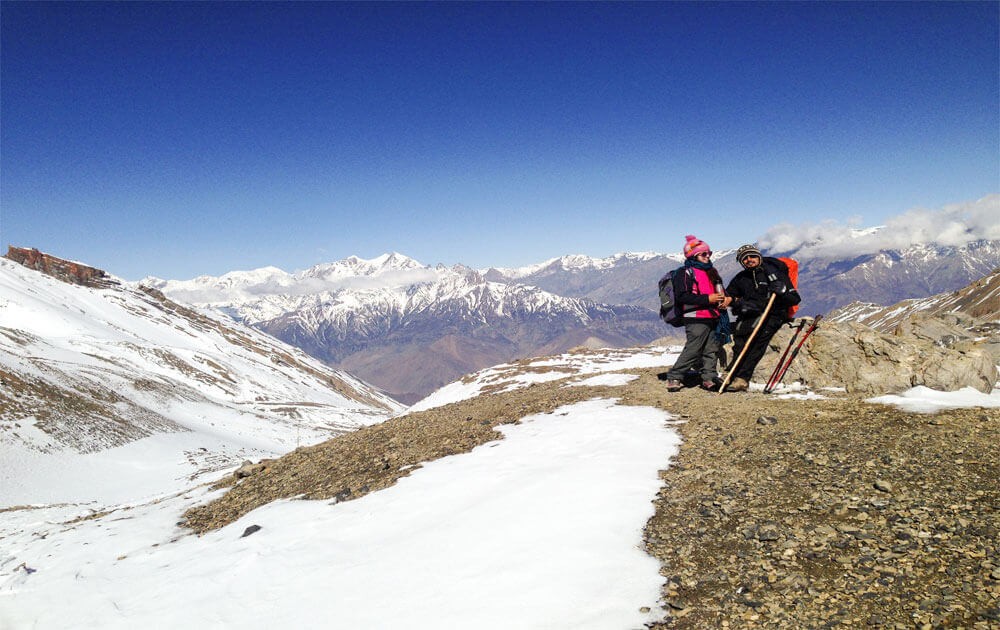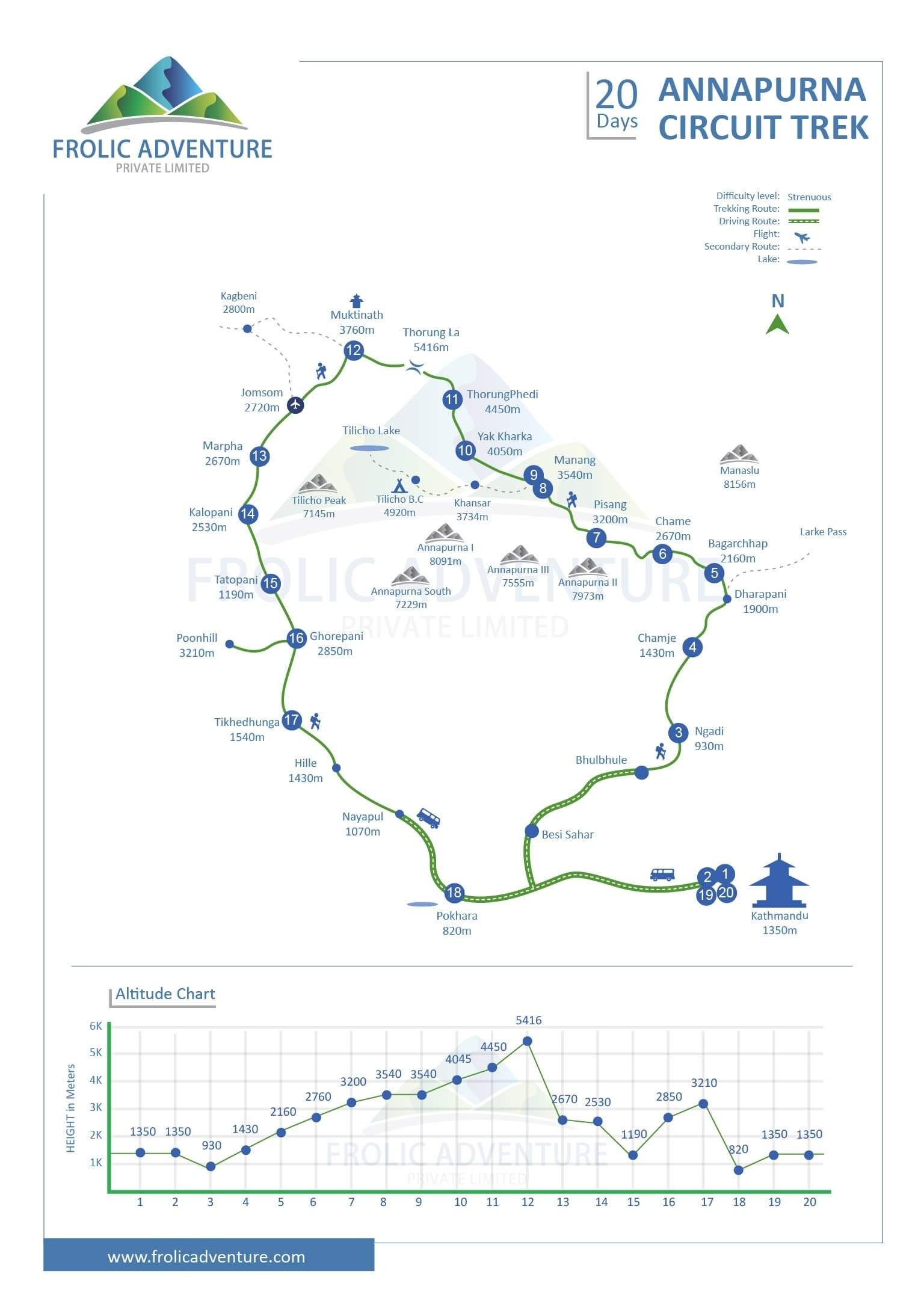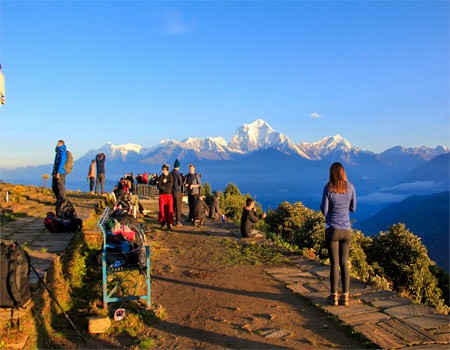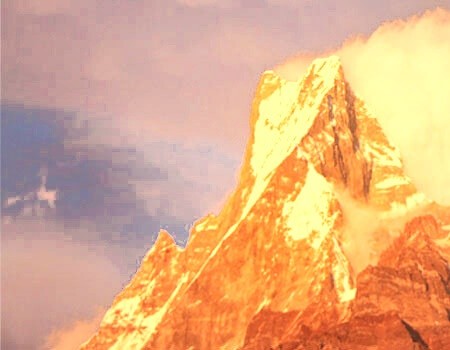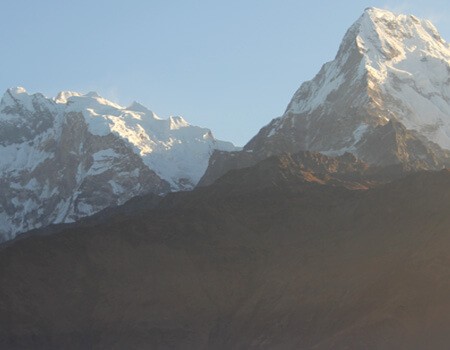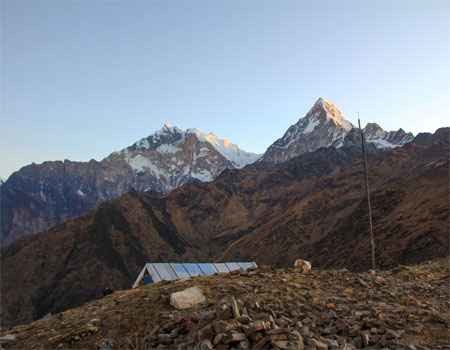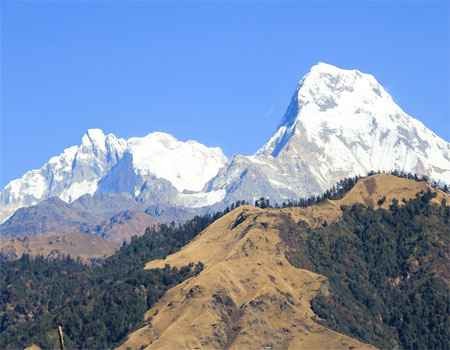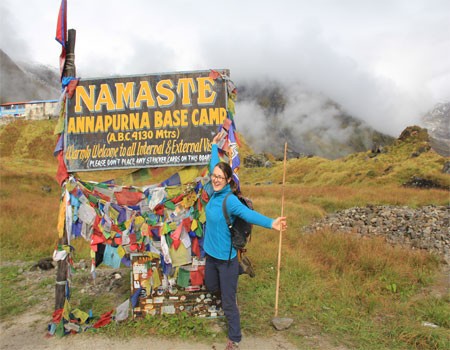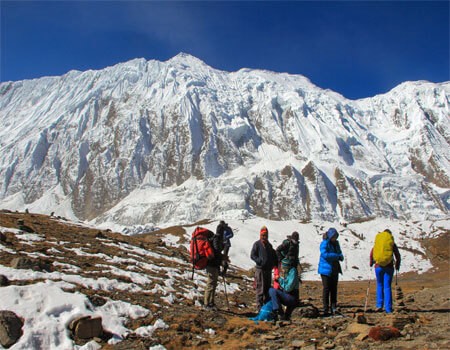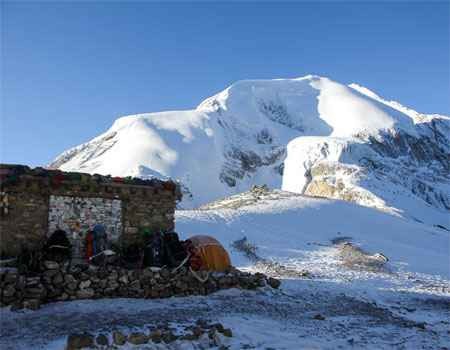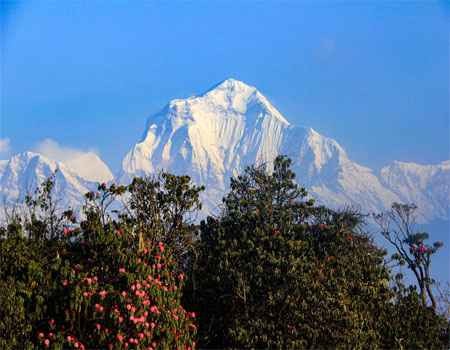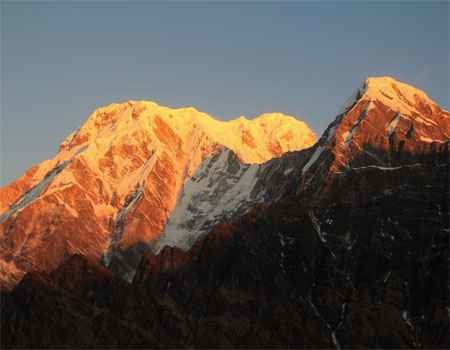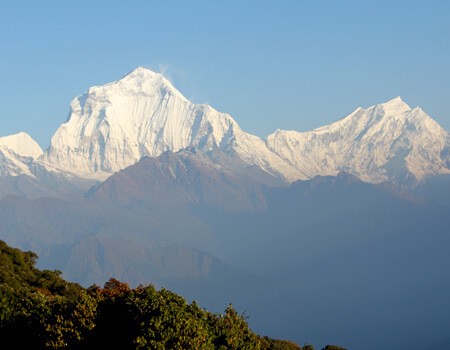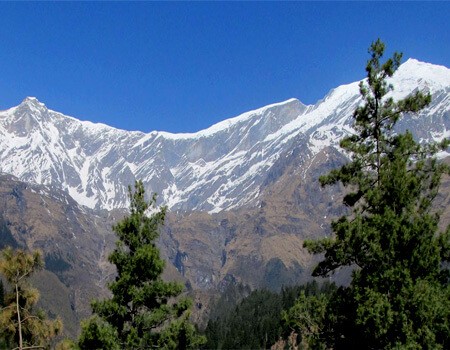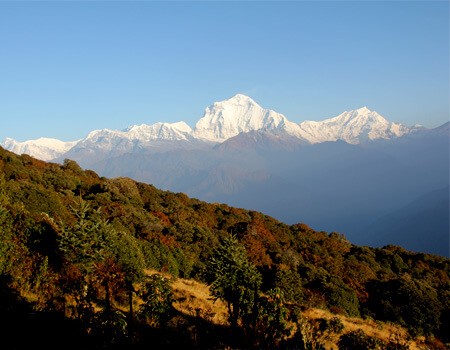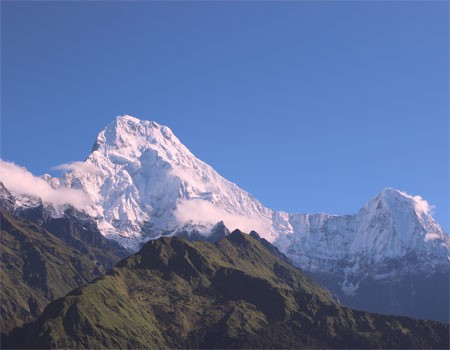The 16-day Annapurna Circuit Trek (ACT) is the most adventurous lodge trekking in the Annapurna region. It is a 12-day mountain trip in Nepal's Annapurna region, starting from Kathmandu and ending in Pokhara. During the high trekking seasons, a couple of hundred adventure trekkers use this route every day. The walking trail of this trip makes a big loop behind the Annapurna mountains.
The ACT is also known as the Throng La Pass trek. The trip offers different natural beauties every day. The hike gradually leads from a low elevated sub-tropical climate to the high alpine dry lands. It again brings you back to a similar environment in the end as the beginning.
At the beginning of the trip, you see traced rice fields, and then walk further higher, where you see different farmlands where people grow potatoes, buckwheat, and other crops that do not need plenty of water. There are various ethnic groups along the Annapurna Circuit, so it is the best trek to explore different cultures, religions, and people's lifestyles, except charming nature.
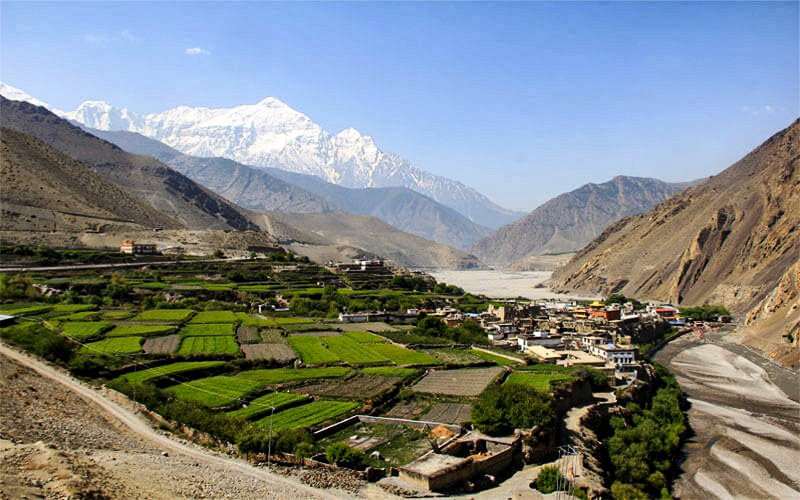
Kagbeni village
Annapurna Circuit Trek Difficulties
The Annapurna Circuit is a challenging trek because of a high pass, Throng La. It will be accessible on the other days except for crossing Throng Pass. However, some trekking days in the lower region can be challenging because of longer distance walks with up and downhills.
Regular trekkers and hikers will find the Annapurna Circuit more difficult. However, first-time trekkers with solid determination can also go on this trip. Still, they must have some hiking practices or physical training for a few months before going on the trek.
The altitude problem makes the trek significantly more difficult when you cross Manang. Less vegetation and less oxygen in the air make breathing difficult in this area. After Manang, you need to amble and stop sometimes to catch your breath until Throng La passes. Also, a long downhill walk after the pass is challenging for those who have knee problems. If there is snow on the trail, it even makes it harder to walk.
Trekking Preparation for Annapurna Circuit
Preparation helps for successful trekking for the Annapurna Circuit and other adventure mountain trips. First, make a strong mentality that you can do it. A positive mindset plays a vital role in completing any adventure activity, so you must have a favorable determination on the trip.
Of course! It is a strenuous trip, so you must be physically fit with hiking practice and muscle training. Hiding a few hours daily on up and downhill trails is best. Or, you can walk a couple of days a week for a few months before you go on this trek. Remember to carry 5-6 kg weight during hiking training. You will take this much-weight daypack on the Annapurna Circuit trip.
Besides mental and physical preparation for this adventure Annapurna trek, you can also do muscle exercises in the gym and run a few kilometers daily. Focus on your leg and thigh practice, which keeps you away from shore legs by walking on many uphill and downhill trails.
Best Time to Trek to Annapurna Circuit
The trekking trail to the Annapurna Circuit is sometimes blocked for a year due to heavy snow. Cloudy days also sometimes block the high mountains. When is the best time to trek there? You will enjoy it a lot if you visit in the right season. Check information about recommended timing or seasons for the ACT.
Autumn Season
Autumn is the best time to trek in the Nepalese Himalayas and the Annapurna Circuit. You find autumn the most prominent season to visit, but when is autumn in Nepal? These three months of September, October, and November are the autumn months, the dedicated months to trek to Annapurna Circuit. Although the first half of September is considered the late monsoon, there can be some rainy days, and clouds can cover the mountains.
The autumn comes right after heavy rainfalls, so the monsoon rains clear hazes and the weather. This season, you see dark green forests, giant waterfalls, and rivers along the Annapurna circuit. If you are thinking about the ACT in autumn, you are choosing a perfect time, so book the trip now with us for autumn 2023.
Spring Season
The Spring is the second best season to trek to Annapurna Circuit. The temperatures remain warmer in the Annapurna region this season than in autumn. Spring can be the best for you if you love to walk in warm temperatures.
Spring is a dry season that will be hazy in lower areas. You can not see mountains from a far distance. Still, once you reach closer to the Annapurna Himalayas, you will see stunning mountain views. Spring is known as the king of the seasons because flowers bloom everywhere at this time, and nature looks colorful. You see magnificently blooming rhododendrons in the lower areas while trekking on the Annapurna Circuit trail.
We suggest walking early and reaching the camp earlier every day because it might rain and hail in the lower region and snowfall in the higher areas in the evening sometimes in this season.
Trek Cost for Annapurna Circuit
The cost for the Annapurna Circuit depends on the service inclusion and exclusion. It costs 1550 USD for a single trekker. It may be cheaper to book the trip for multiple trekkers simultaneously. Check the cost detail below according to the group size:
- 1 Trekker: 1190 USD – Book this trip from the top right booking section
- 2-4 Trekkers: 1075 USD – Book Now
- 5- 10 Trekkers: 950 USD – Book Now
We offer special discounts for families, tour leaders, and larger groups. To take advantage of this offer, please contact us directly or through WhatsApp at +977 9851043624.
Get Annapurna Circuit Adventure Experience with Frolic Adventure
Frolic Adventure is a trusted local trekking operator for Annapurna Circuit in Nepal. We have been operating this trip since 2016. Our experienced government-authorized guides lead you on the trek. We arrange a full-board trip that will be a hassle-free, safe, and memorable mountain trip for you.
Our cost is very reasonable, and you can also get a special discount for the ACT. We use an easy payment system so that you can make secure online payments. We do not add hidden costs, so lace up your boots, pack trekking equipment, and be ready for the Adventure Annapurna Circuit Trek now.
